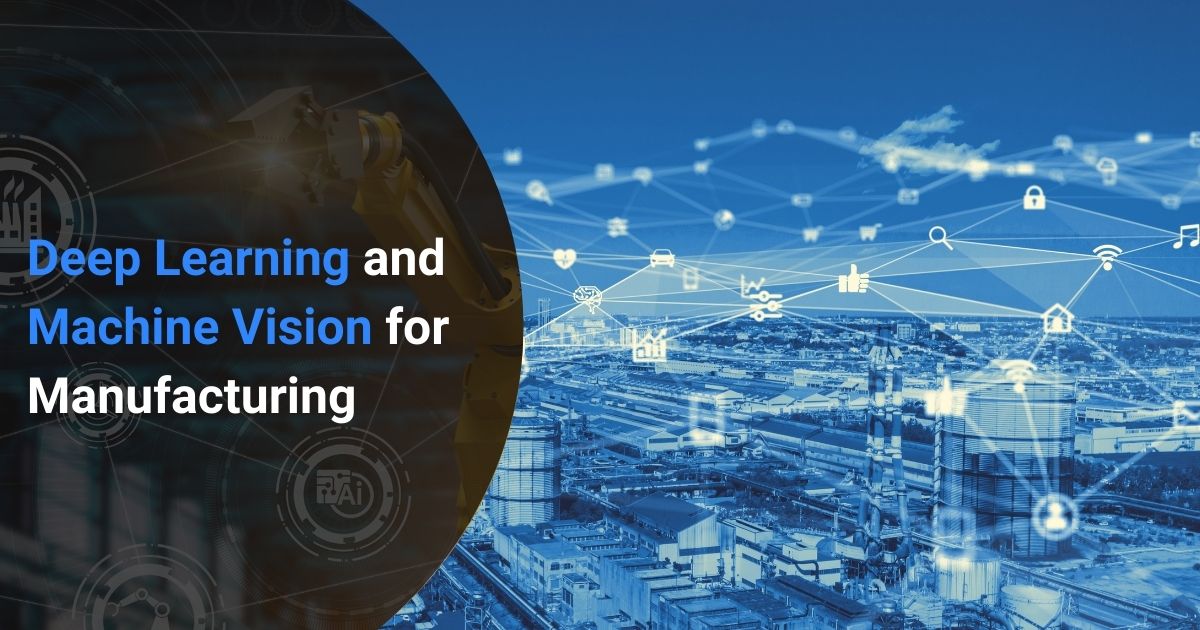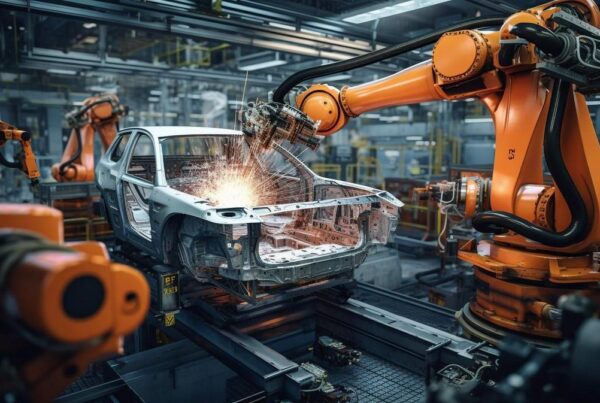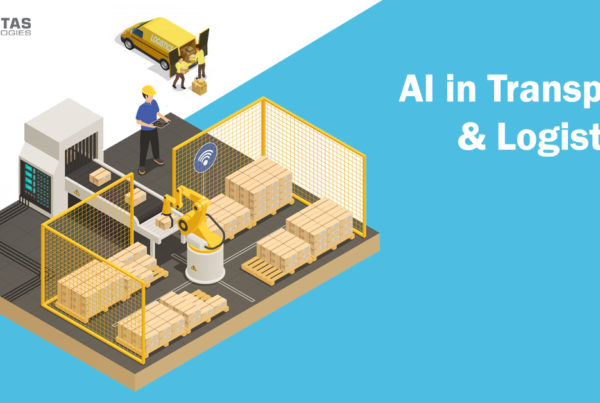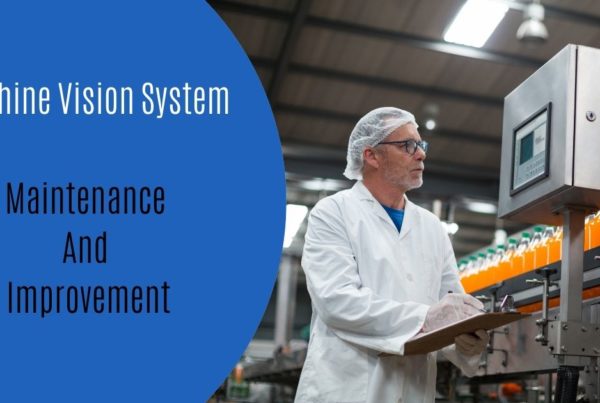
The fourth industrial revolution is essentially about connected devices. The Internet can connect devices as an interconnected and smart entities. The intelligent manufacturing market has grown up to the size of 2.9 trillion by 2021. 30% of the companies are planning to implement intelligent systems over the coming year. The penetration ability of AI is so much so that by 2030, all major industries will be using AI in some form for their operations. The applications of Deep Learning and Machine Vision in Manufacturing include process control, quality control, maintenance, and production among others.
AI in Maintenance –
AI is used to make actionable decisions intelligently with data that is present with you. The data from previous machine failures are presented to the AI for training purposes. The sensors from the equipment are continuously collecting data from various operational parameters which affects the performance of any machine. This data is then collected in a data storage medium, usually the cloud. Finally, the trained AI-based system analyzes the data and makes different recommendations, and also simultaneously improves the correctness of its predictions. This lowers the maintenance and inventory costs and increases overall equipment effectiveness.
AI in Product Quality Inspection –
The assembly line is a bunch of unsorted parts traveling down the chain. A camera-based computer vision system is used to click images of the incoming parts or inventory. It is then sent to a trained AI system that has learned fault detection through data of thousands of images in the past. This AI system compares the images with the images of non-faulty parts and identifies the defective ones. These defective parts are separated from the rest of the inventory and sent for correction. Using Deep Learning and Machine Vision in Manufacturing for inspection increases end-product quality reduces the cost of quality assurance and increases the accuracy of inspection.
AI vs ML vs DL –
- The origin of AI goes back to the Turing Test. Artificial intelligence essentially enables machines to think without any intervention from humans. It is a broad area in computer science that is divided into 3 subsections, Artificial Narrow Intelligence, Artificial General Intelligence, and Artificial Super Intelligence.
- Machine learning is a subset of AI that uses statistical learning algorithms to design smart systems. ML systems can learn and improve without being explicitly programmed to do so. Machine learning is also classified into 3 subsections, supervised learning, unsupervised learning, and reinforcement learning.
- Deep Learning is an advanced form of machine learning. It is inspired by the design of the human brain and how it filters out information. Deep Learning is learning through examples. DL systems can filter input data to predict and classify information. Deep learning is classified into Convoluted Neural Networks, Recurrent Neural Networks, and Recursive Neural Networks.
Why choose Deep Learning models?
In the earlier approaches of automation and intelligence, the amount of data given to the model did not increase the efficiency of the model to a certain extent. Traditional computer vision or machine vision technologies reached the plateau after a few samples. Older models also used to become more complex when large amounts of data were fed to them. In the case of deep learning, the more the data is fed into the algorithm, the more efficient the model becomes. There was no issue of model complexity with large amounts of data in a deep learning model as well.
Traditional Machine Learning vs Deep Learning –
In traditional machine learning models, the aim was to train the model without explicit programming. But a certain step in this machine learning model called feature extraction behaved as a difficult task to perform. For instance, while distinguishing a car from another vehicle, feature extraction demands separating the object from its background and separating the specific features that will help you differentiate between a car and an object that is not a car. In deep learning, the feature extraction step is eliminated. The system needs to figure out what features will distinguish a car from some other object all by itself using neural networks.
Machine Learning –
In machine learning, the computer learns through a certain pathway. There is a set of labeled data that is fed into the model. This data is a collection of examples relevant to the goal at hand. The machine-learning algorithm uses this data to train itself. Once the training is done, it is now a “learned model”. The testing of this model is done through unlabelled data. The data is fed into the learned model and the model outputs predictions. There are various types of machine learning models where this pathway is tweaked according to the availability of data and the needs of the project.
Developing a solution with Qualitas EagleEye® –
Qualitas EagleEye® is a fully integrated deep learning solution. It has an image acquisition model, a vision controller, and an EagleEye® cloud app. The image acquisition model comes with a sophisticated camera, lighting, and lens configuration with a flexible mounting arm. The vision controller captures the data and makes inferences through AI. The EagleEye® cloud app is the training app of the AI inspection model that gets you to a high level of accuracy in your inspection system.
Thus, Deep Learning and Machine Vision in Manufacturing is a growing field. It has a lot of promises and a few bottlenecks. Data preparation for deep learning is a major bottleneck that is overcome in Qualitas through a data preparation matrix where the cells represent variants of the image training data present in a balanced ratio. Deep learning is evolving and many research and development activities are being done to overcome its limitations and make it more usable on a wider scale. The future of deep learning is bright and any organization that uses deep learning for its operations will get an edge against its competitors.






Very nice post. I just stumbled upon your blog and wanted to say that I’ve truly enjoyed surfing around your blog posts. After all I’ll be subscribing to your feed and I hope you write again very soon!